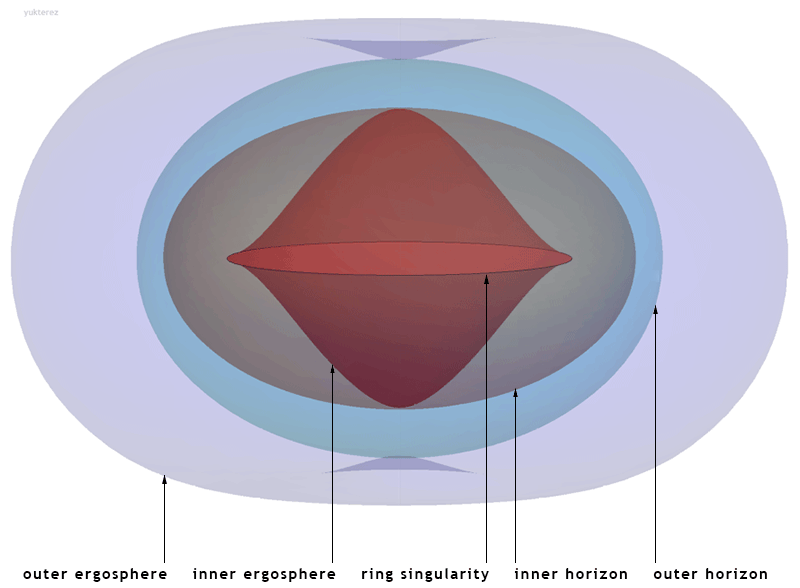If atomic particles, planets and stars have layers, is it reasonable to assume that black holes may also have layers.?
dv said:
Tau.Neutrino said:
If atomic particles, planets and stars have layers, is it reasonable to assume that black holes may also have layers.?
No.
From general relativity – wait on. There are sort of layers from general relativity, the ergosphere comes to mind.

In the ergosphere, the component g_tt is negative, i.e., acts like a purely spatial metric component. Consequently, timelike or lightlike worldlines within this region must co-rotate with the inner mass. Cartesian Kerr–Schild coordinates, equatorial perspective.
Since the ergosphere is outside the event horizon, it is still possible for objects that enter that region with sufficient velocity to escape from the gravitational pull of the black hole. An object can gain energy by entering the black hole’s rotation and then escaping from it, thus taking some of the black hole’s energy with it.

Kerr-Newman, Kerr & Reissner-Nordström surfaces. The changing layers are for black holes with different ratios of mass to spin to charge.

